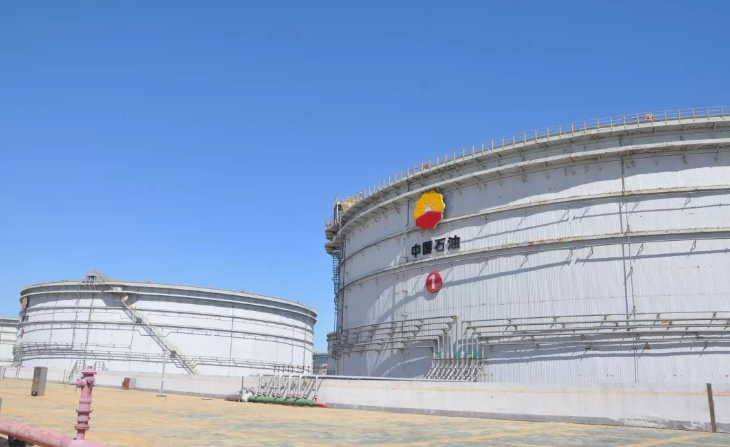Tinplate Sheet vs. Tin-Free Steel (TFS): Which Is Best for Cans, Lids & Packaging?
766Compare tinplate sheet and tin-free steel (TFS) for food cans, lids, and decorative packaging. ind the best material for your project with CJM.
View detailsSearch the whole station
In the oil & gas industry, the structural integrity of storage tanks depends heavily on the quality and specification of the steel plate for tank fabrication. Whether you’re building atmospheric tanks, pressure vessels, LNG terminals, or crude oil reserves, selecting the proper material is a technical and safety-critical decision.
This article breaks down the most appropriate carbon steel and pressure vessel steel grades, their material characteristics, standards, and project-specific considerations — to help engineers, EPC contractors, and procurement professionals make confident, informed decisions.
CJM supplies oil & gas steel plates for storage tanks, separators, and pressure vessels, including ASTM A516 Grade 70, A537 Class 1, and EN 10028 P355GH. All plates are available with UT testing, NACE compliance, and custom cutting services for global tank projects in refineries, terminals, and fuel depots.

Storage tanks in oil & gas applications are exposed to high internal pressure, aggressive chemicals, and fluctuating temperatures. A material failure can cause environmental contamination, financial loss, or catastrophic accidents.
That’s why choosing the right steel plate for the oil & gas industry is crucial. EPC engineers and procurement teams typically source from a reliable oil & gas steel plate supplier offering certified materials under ASME Section VIII, EN 10028, and API 650/620 standards.
In practical selection, common tank plate material grades include A516 Grade 70 pressure vessel plate for refinery tanks and carbon steel plate for fuel and oil storage. For low-temperature applications such as LNG tanks, steel sheet for the oil & gas industry must provide enhanced impact resistance and cryogenic toughness to ensure long-term reliability.
The final material decision should always consider mechanical strength, weldability, plate thickness, and the intended service temperature range.

This is the most widely accepted material for pressure vessels and tank shells due to its excellent toughness and moderate strength. A516 Grade 70 is particularly common in crude oil tanks and separators.
A537 is a quenched and tempered pressure vessel steel, typically used in applications requiring higher impact resistance or thicker wall construction.
For applications requiring design temperatures below -20°C, Class 1 is preferred due to its better impact performance.
For European projects, these EN-compliant plates are often used as equivalents to A516, offering similar properties with CE-marking capability and dual certification options.
Choosing the right grade is only one part of the decision. Experienced steel plate buyers—from tank manufacturers, refinery EPCs, to oil terminal constructors—often also evaluate:

For long-term performance, buyers may request:
These can all be pre-processed at the mill or by the supplier, significantly reducing fabrication time on-site.
Steel plates are bundled with steel straps and moisture-proof wrapping. Shipments are available via 20ft/40ft containers or breakbulk for oversized cargo.
CJM offers:
When sourcing steel plate for the oil & gas industry, prioritize:
| Factor | Recommendation |
|---|---|
| Pressure Rating | A516, A537, or P355GH |
| Impact Resistance | A516 Gr. 70N / A537 Class 1 |
| Temperature Sensitivity | A516 with low-temp test or alloy-enhanced plate |
| Code Compliance | ASTM / ASME / API / EN standards |
| Weldability | Low Ceq, normalized delivery, UT-tested |
| Logistics | Plate dimensions suitable for container or bulk delivery |
Whether you’re sourcing for a refinery project, a fuel depot, or an offshore gas terminal, CJM provides certified oil & gas steel plates, complete with processing and fast international delivery.
WhatsApp: +86 181 9190 6640
Email: info@cjmstainlesssteel.com
Compare tinplate sheet and tin-free steel (TFS) for food cans, lids, and decorative packaging. ind the best material for your project with CJM.
View detailsDiscover the key differences between weathering steel and regular carbon steel. Learn which grade — Corten A, ASTM A588, or Q355NH — is best for your outdoor project. Fast delivery from China’s trusted steel supplier.
View detailsExplore different types of roofing sheets, including galvanized, color coated (PPGI/PPGL), corrugated and more. Learn the specifications and choose wisely.
View detailsDiscover how steel exporters can deal with global policies for sustainable steel export. Learn about green steel, EAF steel production andEU CBAM regulations.
View details
HelloPlease log in